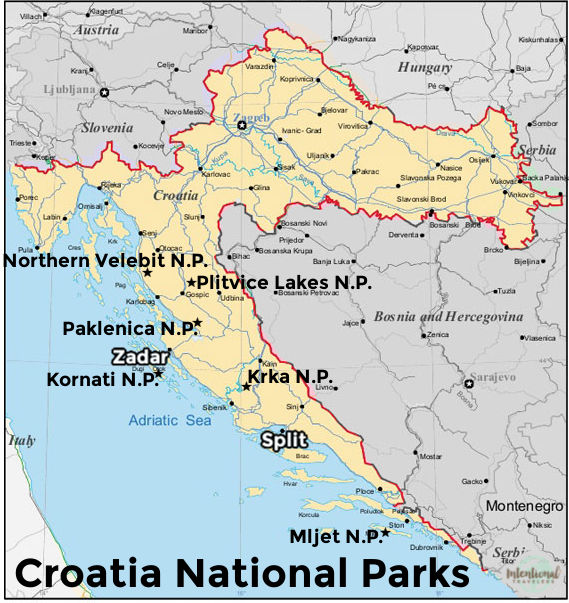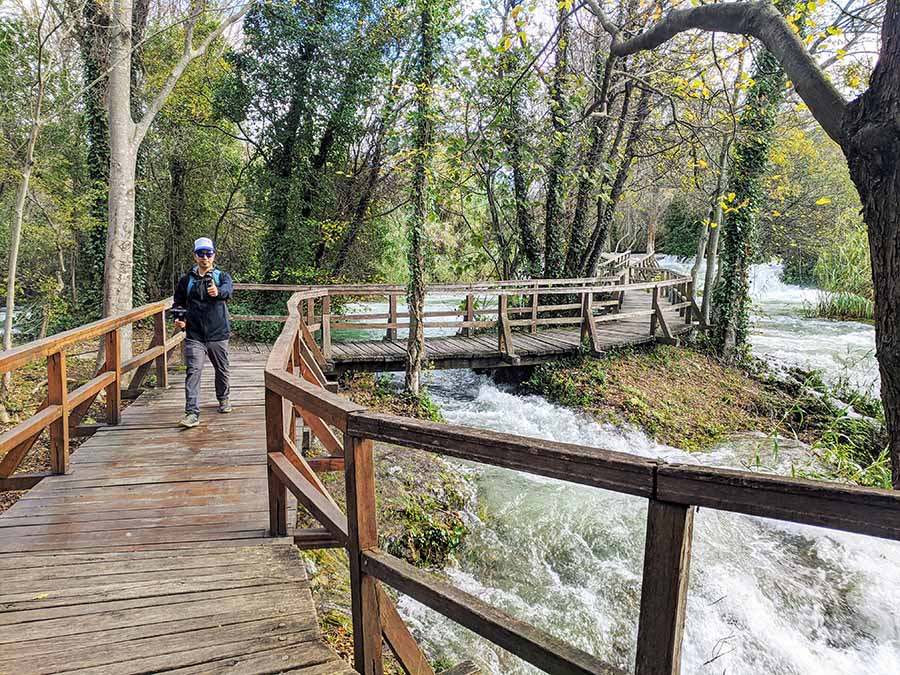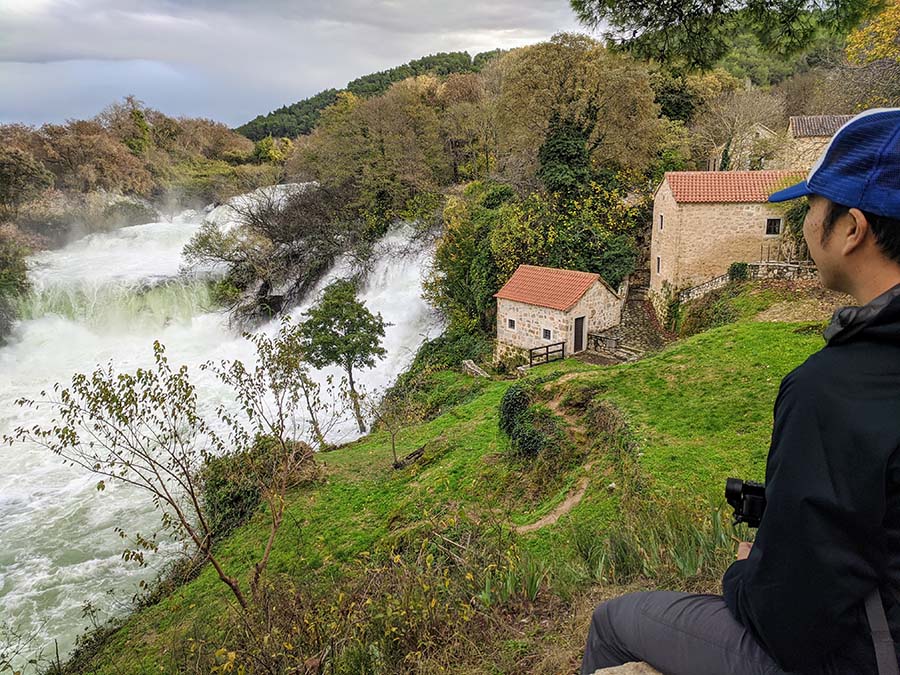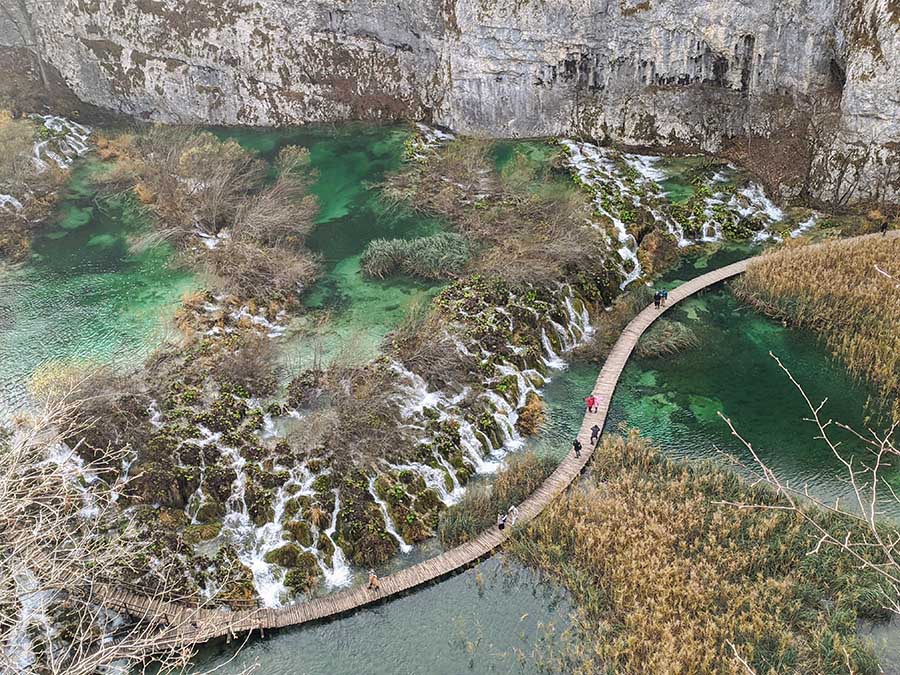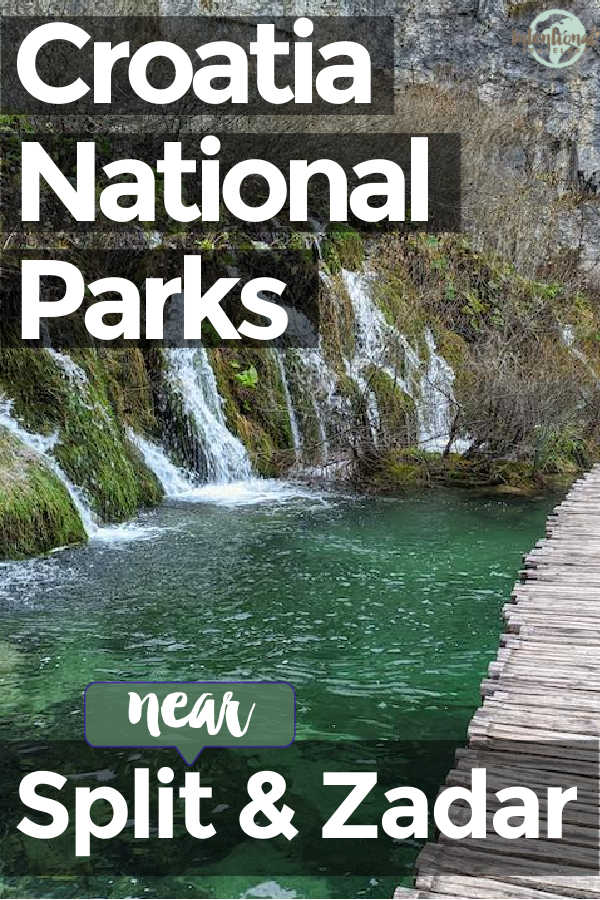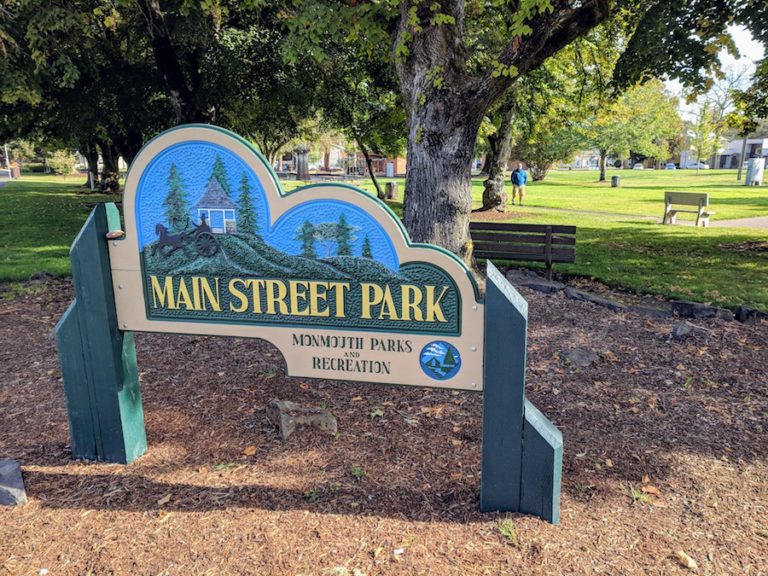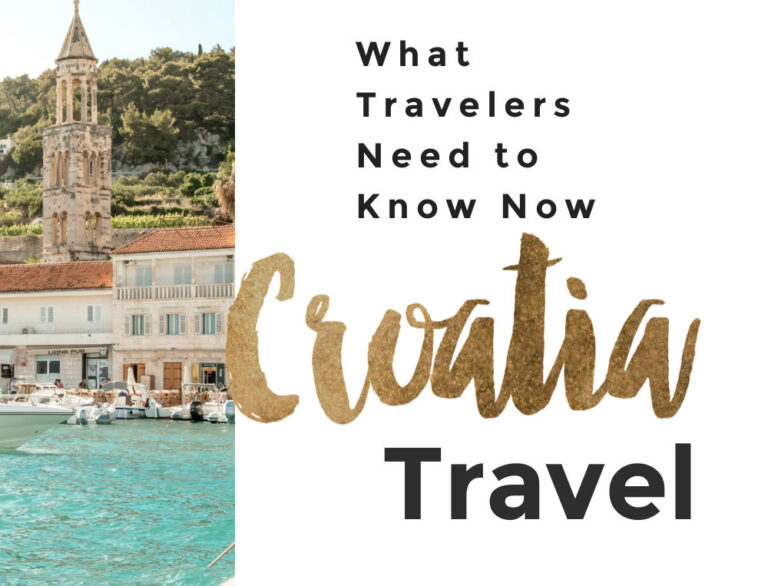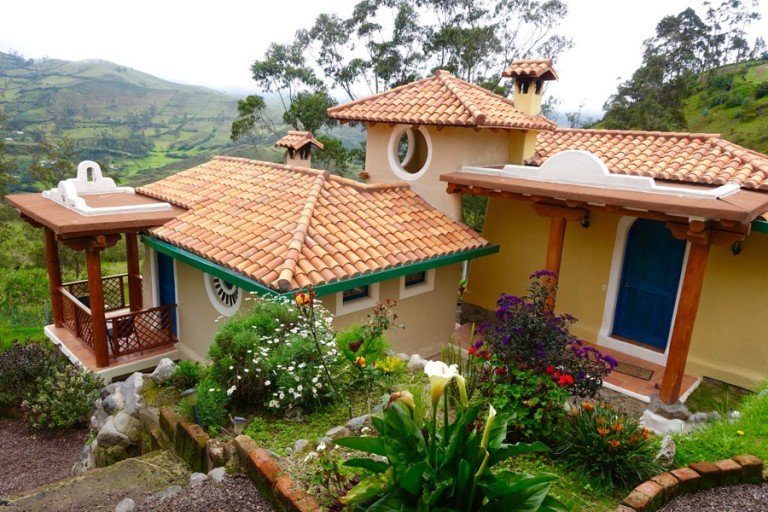Croatia National Parks Near Split and Zadar
Croatia is a country bursting with fascinating destinations, the most popular being amazing beaches and historic towns. But beyond that, Croatia has more to offer – their beautiful national parks! There are eight national parks in the country, all of which are worth visiting.
Croatia’s National Parks are teeming with natural beauty. Each is known for different things from rich wildlife, impressive waterfalls and cascades, archipelago of islands, and tall peaks for hiking and climbing. Here are some of the best National Parks in Croatia near Split and Zadar.
Table of Contents
Map of Croatia National Parks Near Split and Zadar
To give you an idea of where the National Parks of Croatia are located, take a look at the map below. You can see Split and Zadar are both centrally located on the Croatian Coast.
Zadar to Split is less than two hours by car. You can also drive to any of the nearby National Parks in a few hours as well.
For more about driving in Croatia, please refer to our Dalmation Coast road trip article.
Krka National Park: Spectacular Park Close To Split, Sibenik, and Zadar
Krka National Park is located along the Krka river, after which it is named. The park is probably best known for the Skradinski Buk, a beautiful clear pool with high waterfalls and cascades.
As one of the main attractions of the park, many of the hiking trails and viewpoints revolve all around the famous Krka waterfalls, the best waterfalls near Split Croatia.
We were able to do the Skradinski Buk loop hike. It’s an easy loop that took us less than 90 minutes and allowed us to see the best of the park. The loop goes through wooden walkways over the rushing water with views of the beautiful waterfalls.
We recommend this waterfall hike for anyone with at least average mobility as it is not too strenuous.
Another popular attraction is Roski Slap, a multi-tiered waterfall at the North end of the park. We made our way around the Roski Slap circle loop trail, which included wooden bridges across the river’s “necklaces” and a couple side trails to climb up to overlooks.
How to get from Split to Krka National Park: The drive to Krka National Park from Split is around an hour and a half via highway A1. For public transport, you can take the bus from the Split Central Bus Station to Skradin (just over an hour) where you can catch a ferry to the Krka National Park.
You can also book a full day tour of Krka Park from Zadar or from Split with transportation and boat ride included.
How to get from Zadar to Krka: Drive East via E65 from Zadar to Kirka (just over 1 hour), or avoid toll roads by taking D56. In season, there are direct buses from Zadar to Krka, however, during off season you would need to change buses in Sibenik and take a second bus to Lozovac.
Cost: 200 – 30 hrk ($30 – 4.50 USD) per person per day, depending on the season. High season is June through September.
Highly rated accommodations near Krka Park:
– Vicencin Place apartments – Two modern studios in the center of Old Town Sibenik, friendly owners (we stayed here twice)
– Scardona Park Luxury Accommodation – Queen and King rooms in Skradin, on site restaurant and pool
Plitvice Lakes National Park: Croatia’s Most Popular National Park
Plitvice Lakes National Park is the most famous national park in Croatia. This UNESCO World Heritage Site is best known for its beautiful hidden lakes, limestone caves, and flowing rivers all connected by waterfalls of different heights.
Located up in the mountains of central Croatia, the weather here is quite cold compared to the Dalmatian Coast and it’s often rainy outside of summer, but it’s still definitely worth visiting.
Make sure to check their official website for any announcements or closures. We also suggest conveniently buying your entrance tickets online in advance.
In the website you’ll also find the different lake tour programs available. Each program differs in length, duration, and starting point, from as short as 2 hours all the way to 8 hours.
We did the H Program which was a loop through the upper and lower lakes and included hiking, a bus tram, and boat ride. The hike went through forest and around the edge of the large lake where the waterfalls are more spread.
Since we visited during winter, there were a couple of sections with icy paths near the falls. The hike ends with a climb up to some scenic overlooks of a series of waterfalls that were closer together.
How to get from Split to Plitvice Lakes National Park: Drive via the E65 and E75 roads which takes around 3 hours. There is a toll and it can get quite busy during summer.
For a toll-free route, drive from Split via Sinj, Vrlika, Knin and Korenica which takes around half an hour longer. The shortest way via bus follows this route.
During peak season (June to September), there are at least 9 buses daily that are running from 7 am to 8 pm. During low season, it’s much harder to do a day trip since there are only around 3 buses running daily.
How to get from Zadar to Plitvice: Drive via E71 and A1 (under 2 hours) or avoid the toll road by taking D27 to A1 (adds 20-30 minutes). There are also 7 daily buses running from Zadar to Plitvice, April through October. In winter, however, the limited bus schedule doesn’t work for a day trip.
You can also book a Plitvice day tour package, which includes transportation from Zadar or from Split, a guide, and sometimes meals.
Cost: 360 – 80 hrk ($53 – $12 USD), depending on the season. June through September is the most expensive for tickets and hourly parking.
Accommodations Near Plitvice National Park:
– Plitvice L&L Leisure Apartment – Top notch, modern apartment 1.6 miles from Entrance 2, sleeps up to 4 people
– Bramado Apartments – Cozy and clean studios or 2-bedroom apartments 3 miles from the park
Kornati National Park
I, Nikater, CC BY-SA 3.0 via Wikimedia Commons
Kornati National Park is an archipelago made up of over 89 islands, islets, and reefs. It’s located in the Adriatic sea in the northern part of Dalmatia. These densely grouped and largely uninhabited islands are a perfect place for those who love nautical activities.
There are a whole range of different boat tours for visitors. They’re mostly day tours, departing at 9 am and returning late in the afternoon.
Tours include sailing through the islands, secluded beaches and inlets, lunch either in the boat or in one of the small Kornati restaurants, and a break or two for swimming and sightseeing with a local tour guide.
In addition to boat tours, you can also snorkel and explore the deep blue underwater of the Kornati waters. Qualified autonomous divers can arrange to go scuba diving in any of the nine designated scuba diving areas within the Kornati Islands National Park.
How to get from Split to Kornati National Park: Kornati is actually the closest National Park near Zadar. But the best way to get to Kornati National Park is by any sea-going vessel. This means your own personal boat, transport service from local boatmen, or by organized tours booked through an agency.
You can also book a Kornati and Telašćica National Parks boat trip from Zadar
Cost: The cost of the entrance fee depends on the vessel/boat, regardless of the number of people. There are no individual entrance tickets. You can check the price information on their website as well as buy directly on their webshop, which is cheaper than buying inside the park.
Accommodations Near Kornati Islands:
– Long Island Olive Apartment – Modern 1-bedroom apartment in Sali on Dugi Otok island, friendly owners, beautiful terrace
– Festa Kornati Glamping Resort – Family-friendly luxury tents on the island of Žut, with breakfast, waterpark, fitness center
Paklenica National Park in Croatia
Chmee2, CC BY 3.0 via Wikimedia Commons
Paklenica National Park is located along the Velebit range of mountains, inland from the coast of North Dalmatia and northeast of Zadar.
The landscape is a mixture of high peaks with scenic views, canyons, deep gorges, forests, and karst formations. It’s a great place for nature lovers and avid climbers and hikers.
For climbing, there are about 500 well-equipped marked routes of different difficulty and length ranging from accessible climbs for those with children to more modern, long sport routes for experienced climbers.
The hiking trails are just as varied. There are tourist trails that lead to sights like the Manita peć cave to more intense paths leading to the highest peaks of the Velebit Mountain.
Manita peć is the most famous attraction, since it’s the only cave accessible to the public through guided visits. The cave is full of interesting minerals and formations as well as rich underground fauna. The park in general is home to over a thousand plant species, making it a valuable biodiversity hotspot.
How to get from Zadar to Paklenica National Park: From Zadar drive east towards Paklenica National Park via E65. There are bus lines departing from the Bus Terminal in Zadar and it takes 45 minutes to get from Zadar to Paklenica.
Cost: 20-60 hrk ($3-$8 USD) for a 1-day entrance pass per person, depending on the season. There is also an additional fee of 10-20 hrk ($1.50-$3 USD) for vehicles. The entrance fee for the Manita peć cave is 30 hrk ($4 USD) per person.
Top Rated Accommodations Near Paklenica Park:
– Apartments Paklenica – Modern apartment with balcony in Starigrad, sleeps up to 5 people, just a short drive from the National Park
– Hotel Vicko – Nice rooms close to the mountains as well as the beach, breakfast included
Mljet National Park
dronepicr, CC BY 2.0 via Wikimedia Commons
Mljet National Park is located in the Island of Mljet and is the southernmost of the Croatian National Parks. The area borders two saltwater lakes and the landscape features submerged bays, beaches, sea caves, native species, and archaeological finds.
Both lakes are encircled by well-marked paths, so you can explore the park by cycling or strolling along the footpaths.
Some fun activities include swimming and kayaking. You can rent kayaks at Mali Most, the point where two lakes are connected by a narrow channel, to paddle around the lakes. For views of the scenery, you can hike up the hills above the Mljet coastline.
Right in the middle of the lake you’ll also find a smaller islet on which stands a former 12th-century Benedictine monastery. This monastery is now a historic site and a café/restaurant, perfect for breaks after swimming.
How to get from Split to Mljet National Park: There are no trains or buses to the island. The best way to get to Mljet from Split is by catamaran or fast ferry. The catamaran operates daily during the high season and departs from Split in the morning at 7:30 and arrives at Mljet (Sobra) at 11:15-11:20 am. You can consult the ferry timetable here.
Cost: From January 1 to May 31 and October 1 to December 31, tickets are 60 hrk ($8 USD). During high season from June 1 to September 30, tickets are 140 hrk ($18.50 USD).
Top Rated Accommodations On Mljet Island:
– Teuta Holiday House in National Park – Well equipped 2 bedroom house with terrace, 10 minute uphill walk from the park, 3 night minimum stay
– Guest House Radulj – Simple apartments with beautiful island views in Polače, a short drive from the park
Other National Parks in Croatia
Croatia has eight total National Parks. The two we did not include, Risnjak Park and Brijuni Park, are not as close or as easy to get to from Split.
Risnjak National Park is located in the mountainous and forested region of Gorski Kotar. The landscape makes it an ideal place for hiking. The highest peak, Veliki Risnjak, can be reached by foot and offers amazing panoramic views. The park also boasts of rich flora and fauna – you can spot wild animals like bears, lynx, deers, and wolves.
Highonsteep, CC BY-SA 4.0 <https://creativecommons.org/licenses/by-sa/4.0>, via Wikimedia Commons
Brijuni National Park is an archipelago of 14 small islands off the Istrian peninsula. There are many interesting archaeological and historical sites to visit such as the 200+ dinosaur footprints on Veliki Brijun Island, ancient Roman ruins, a Byzantine Palace, and the 5th-century St. Mary’s Church.
Guba Zoky Rabko, CC BY-SA 3.0 <https://creativecommons.org/licenses/by-sa/3.0>, via Wikimedia Commons
Other Croatian Nature Parks
In addition to national parks, Croatia also boasts of 11 nature parks, 2 reserves, and 80 monuments of nature throughout the country.
Nature Parks near Split and Zadar Croatia include Vrana Lake, Nove Starine Art and Nature Reserve, Likva Geopark, Biokovo Nature Park, Vrelo Krupe Nature Preserve, and Vransko Jezero Nature Park.
Croatia’s National Parks are hidden gems that are waiting to be discovered. Each offers something for every kind of traveler, whether you’re looking for panoramic views, diverse flora and fauna, challenging hiking trails, or more relaxing activities by the water.
Like this post? Pin it for later or share with friends!

